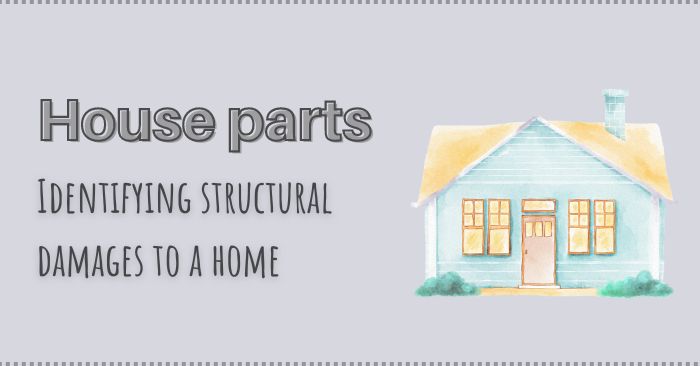
The structure of a building presents a vital part of what makes a building safe. When structural damages occur, whether during the home construction process or years later, it’s essential to assess the situation and make needed repairs.
A structural component of a home comprises different elements making up the bones of a building. These components usually include the roof, concrete slab, columns, beams and many other vital components of a house or building.
If your home has structural damage, you may see warning signs on both the interior and exterior of the property. Inside your home, if you notice cracks on the interior walls or ceiling, this can be a sign of a potential problem that can grow if left untreated.
Damage to electrical and plumbing work can potentially be really crucial and can result in significant damage to a structure and potentially be a safety hazard, going against building codes.
If you plan to buy a property, conducting a final inspection before completing a purchase can provide great insight into whether the entire house is safe and ready for occupancy.
Home structural damage can be repaired however, repair costs and the length of the project all depends on how extensive the damage is to the property.
For example, if particles are obstructing airflow in your HVAC system, a technician may be able to clean and replace filters for a reasonable fee.
However, if the damage to the system is so extensive, causing it to need replacement, a homeowner may spend anywhere from $4,000 to around $9,000 for replacements and installation.
If you think your home has structural damages, speaking with a professional in the field can help provide you with solutions to make repairs as soon as possible.

There are many qualities and skills that go into being an excellent real estate professional - integrity, in-depth community and market knowledge, marketing savvy, effective negotiation skills and a high-quality professional network, all of which are hallmarks of how I work.
That said, in my experience as a real estate professional, I've also found that providing the very best service is essentially about putting my clients first. This means keeping myself accessible, being a good listener as well as a good communicator, and responding quickly to your needs.
This "client first" philosophy has always been my approach and it requires me to continually improve my skills and ways of doing business. In addition, I've found that the latest technologies are enabling me to do everything I've always done, only much more quickly and efficiently. They've also helped me to extend the range of services I provide to my clients.